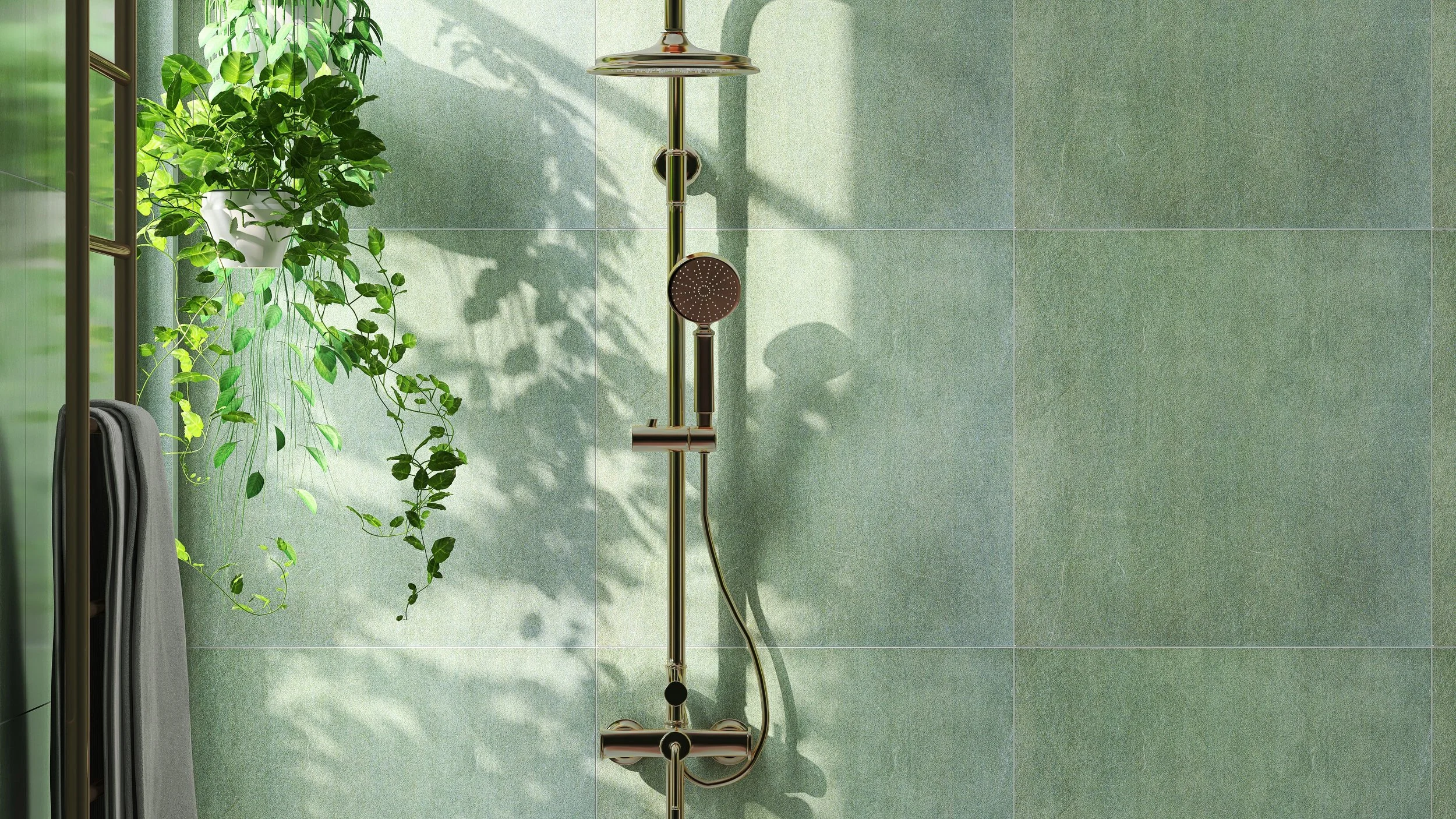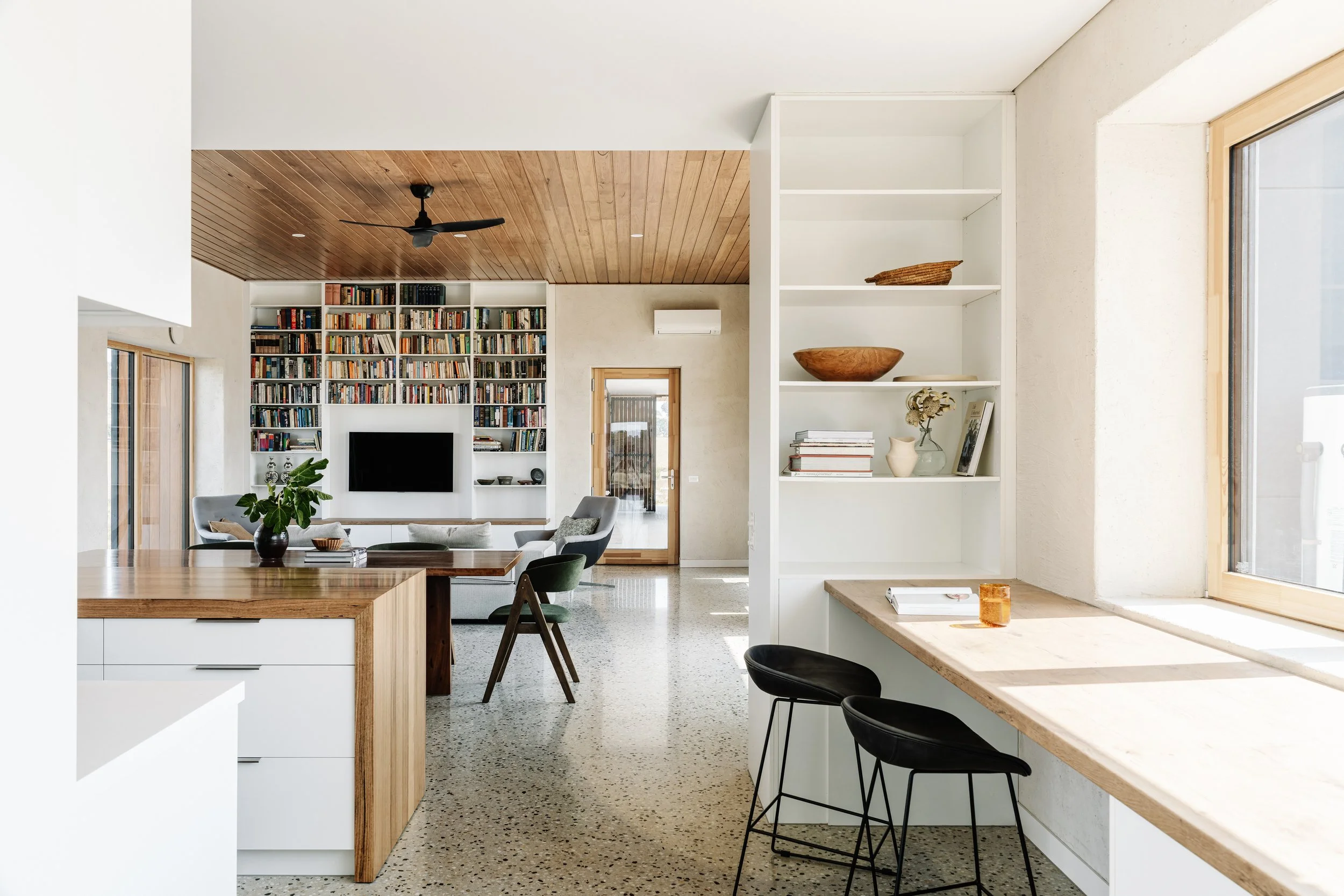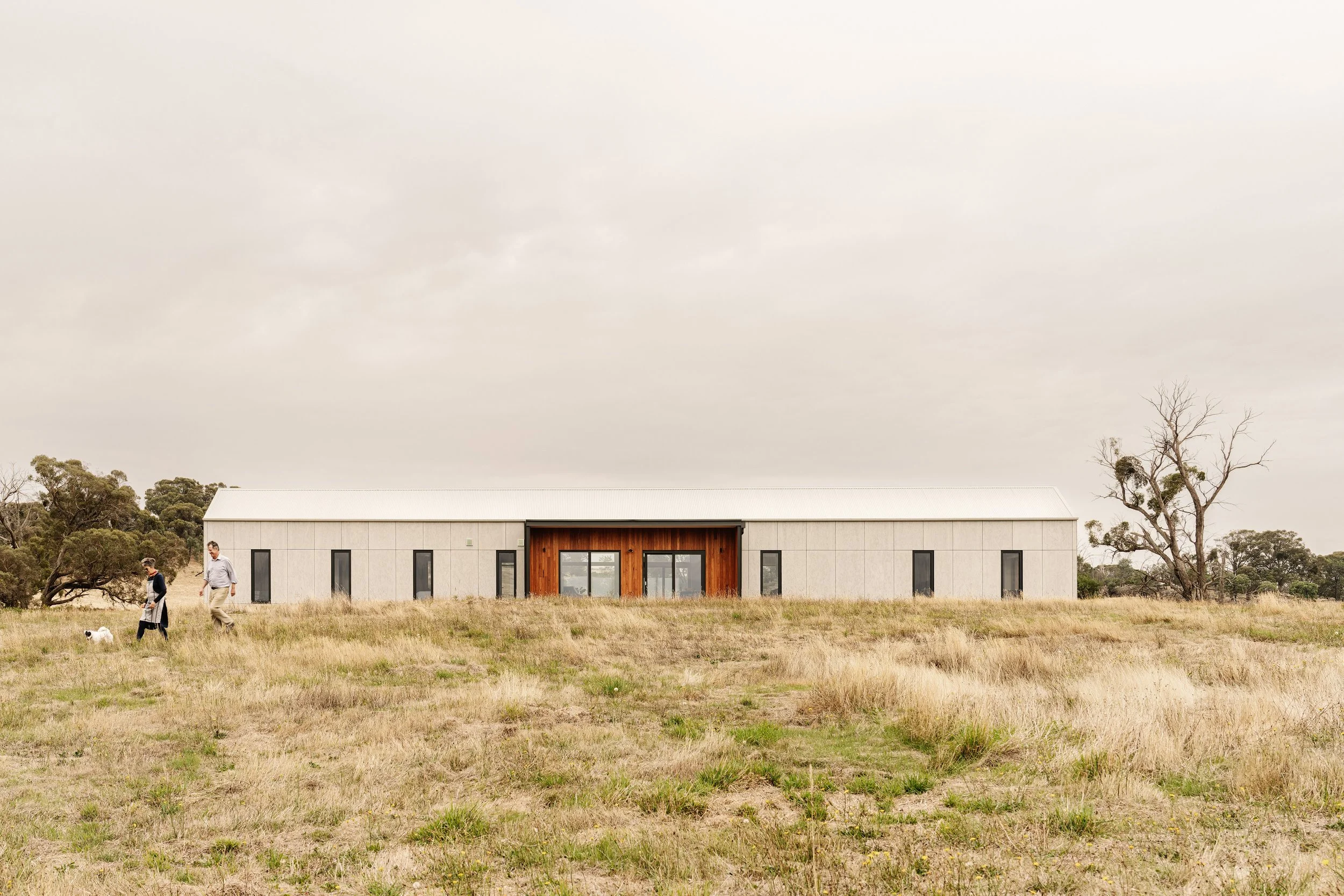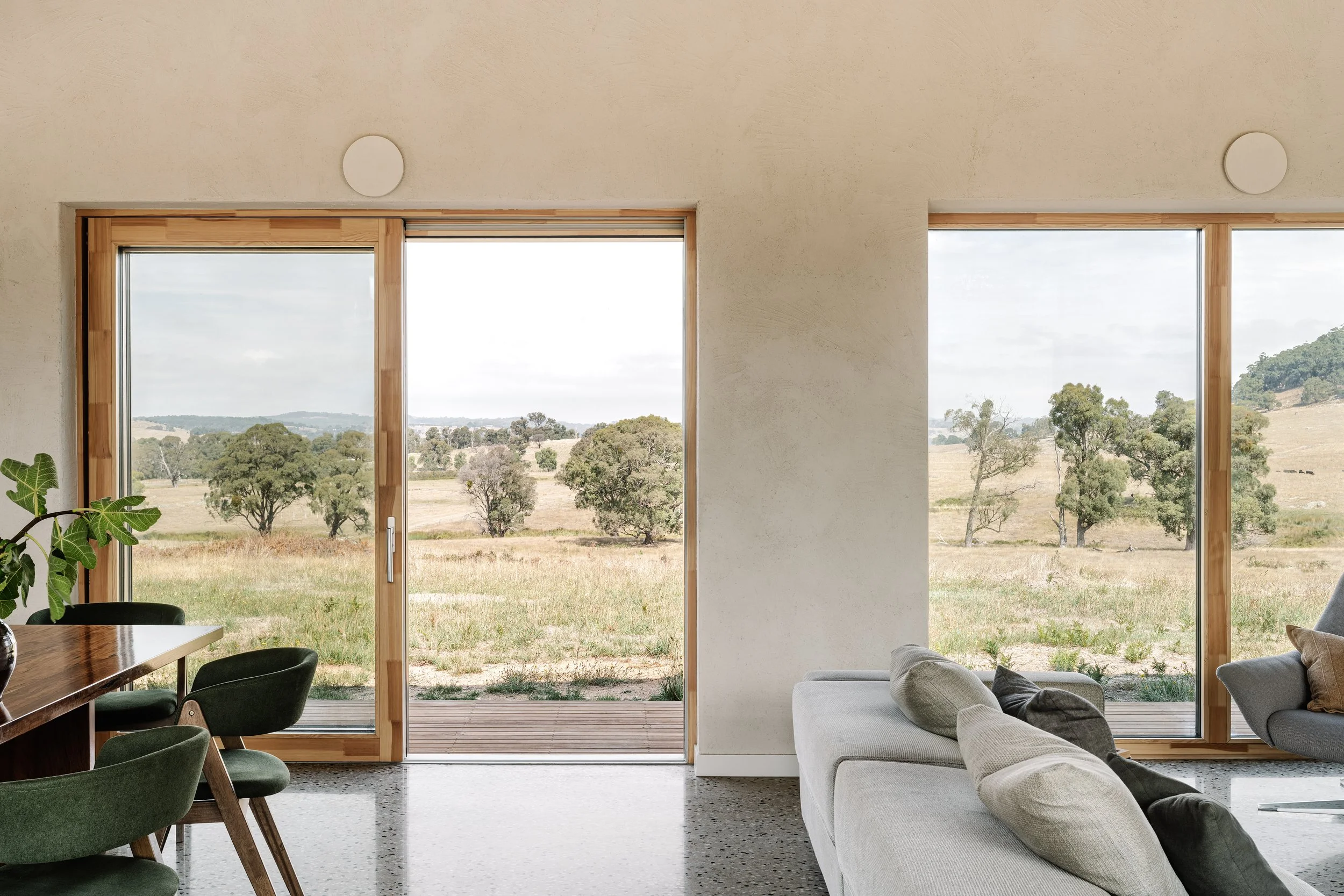Bringing nature home: Infusing interiors with natural forms and features
In part two of our series on biophilic design, we delve deeper into its practical applications. Architect Fiona Gray explores two fundamental elements, environmental features and natural shapes and forms, and how they can enhance the aesthetic appeal of living spaces as well as improve health and wellbeing.
ENIVRONMENTAL FEATURES
There is a broad spectrum of environmental features in biophilic design, ranging from water and air to natural materials and expansive views. These elements are pivotal in shaping the ambience of a space, enhancing its ability to promote relaxation and wellbeing. We will focus on just a few attributes to demonstrate how strategically integrated environmental features can transform residential spaces into nurturing biophilic sanctuaries.
Plants
Incorporating plants into home design is the most recognised and embraced aspect of biophilic design. Whether through potted greenery, hanging plants, or more elaborate installations like green walls and vertical gardens, the inclusion of indoor plants serves multiple functions. Beyond aesthetic enhancement, plants play an important role in improving indoor air quality by filtering pollutants and releasing oxygen. They also establish a visual and tactile connection with nature, which has been shown to lead to improved mood, reduced stress levels, and increased productivity and creativity. Integrating a variety of plants within the home taps into the inherent restorative qualities of natural green spaces, bringing these benefits into our everyday lives.
Water
The sound of flowing water is inherently soothing and serves as a powerful auditory connection to nature. It can be introduced using water features such as indoor fountains, small waterfalls in rockeries, outdoor ponds, or rain chains in place of downpipes. Strategically placing water features near entryways can immediately create a calming atmosphere, transforming them into effective transitional spaces that reduce stress and sensory overload upon entering the home. Beyond their auditory benefits, water features also enhance visual and tactile appeal.
Water features can also enhance the humidity levels in a home, which can be beneficial in drier climates or where heating systems are frequently used. Optimal humidity helps alleviate dry skin, throats, and nasal passages, contributing to improved overall respiratory health and comfort. However, it's important to maintain the right balance, as excessive humidity can lead to condensation and mould growth. Ideally, humidity levels should be kept between 30 and 50 per cent.
Colour
The impact of colour on mood, stress levels, and cognitive function is well documented within the field of environmental psychology, with certain hues known to significantly influence our emotional and mental wellbeing. Opting for a palette inspired by the natural world can transform interiors into calming environments that mirror the soothing qualities of nature.
Soft greens, often associated with vegetation and foliage, are particularly noted for their restorative effects. These colours have been shown to help reduce stress and enhance focus, making them ideal for areas used for relaxation and rejuvenation. Earthy browns and warm beiges, reminiscent of soil and timber, convey a sense of stability and reliability, grounding both the space and its occupants. Sky blues, reflective of both the sky and water, are celebrated for their ability to inspire calm and reduce anxiety, creating a serene atmosphere that fosters mental clarity. Additionally, bright pops of colour such as those found in berries or flowers can serve as vibrant accents that bring the vivid beauty of nature indoors.
NATURAL SHAPES AND FORMS
Biophilic design embraces the organic shapes and forms found in nature, which are often characterised by an inherent order and complexity: think of the geometric patterns of honeycombs or the fractal symmetry of ferns. These natural forms provide a striking contrast to the rigid, rectilinear forms typical of most modern homes, introducing an element of organic dynamism into living spaces.
Biomimicry
Biomimicry in architecture draws direct inspiration from the natural world, incorporating biological processes and elements into the design of buildings and interiors. An example of this is the spiral staircase, which replicates the shape of a nautilus shell, borrowing its mathematical harmony and structural efficiency and blending functionality with nature’s geometric beauty.
Another fascinating example of biomimicry is inspired by the natural ventilation and thermal mass principles of termite mounds. In hot climates, termites build their mounds with a network of ventilation shafts and use soil for thermal mass, effectively maintaining stable temperatures despite external heat fluctuations. This approach can be adapted for passive home cooling, by positioning windows at different heights to facilitate natural cross ventilation and using natural materials such as rammed earth or stone for thermal mass. These materials absorb heat during the day and release it slowly at night, stabilising indoor temperatures.
Resisting straight lines
Moving away from the conventional use of straight lines in home architecture can transform spaces into more dynamic and harmonious environments. Curved architectural elements introduce fluidity and can enhance the atmosphere of living spaces. For instance, curved walls enhance the acoustic quality of large areas like living rooms by scattering sound waves and reducing echoes, while also providing an intimate feel. Arches can improve visual and functional flow by replacing traditional doorways, enhancing the perception of space, and making areas feel more interconnected. Arched or circular windows break from rigid angles, offering unique views that reflect organic forms and add visual softness. Additionally, furniture with rounded edges, such as round tables, curved sofas, and oval rugs, softens spaces and provides a stylish contrast to typical rectilinear design.
Blending nature with modern living
Blending nature with modern living through biophilic design involves integrating both direct and abstract elements of nature into a home’s design. This approach not only beautifies living spaces but also supports mental and physical wellbeing. As we seek to address urban sprawl and environmental degradation, biophilic design becomes a vital tool for reconnecting with the natural world. By adopting these principles, homeowners can transform their living spaces into functional, beautiful sanctuaries that nurture both body and soul, providing a peaceful retreat from the demands of modern life.
CASE STUDY: HUFF’N’PUFF HAUS
Located on Taungurong Country in central Victoria, the Huff’n’Puff Haus is the embodiment of a home deeply connected to nature. Owners Pip and Stephen aimed to create a dwelling that not only respects but also seamlessly integrates with its environment. Architect Talina Edwards of Envirotecture embraced numerous biophilic design principles to ensure that every element fosters a sustainable and nurturing environment.
Central to their biophilic approach is the house’s natural, earthy colour palette that resonates with the surrounding landscape. The lime-rendered strawbale walls are a soft sandy colour that harmonises with the rural backdrop, providing a tactile gentleness to the architecture. This aesthetic is further accentuated by the slightly rounded corners of the walls. Complementing this, native Australian timbers used throughout the home exude a warm, inviting ambience. The exposed stone aggregates in the polished concrete floors feature subtle colour variations, enhancing the cohesive natural colour scheme and enriching the overall design.
The floors also play a crucial role in regulating indoor temperatures by acting as thermal mass, absorbing heat during the day and gradually releasing it as temperatures drop, helping maintain a stable and comfortable indoor climate. Cross ventilation, another important aspect of the home’s passive design, is facilitated by tilt-and-turn windows that allow natural airflow throughout the house. This not only aids in effective cooling during warmer months but also maintains a tangible connection with the natural environment.
Designer: Talina Edwards, Envirotecture
Location: Ruffy, VIC (Taungurong Country)
Above: Case Study - The strawbale Huff’n’Puff Haus by Envirotecture incorporates many biophilic design elements. Image: Marnie Hawson.
Above: Case Study, Huff'n'Puff Haus by Envirotecture. Image Marnie Hawson.
Above: Case Study, Huff'n'Puff Haus by Envirotecture. Image Marnie Hawson.
Above: Case Study, Huff'n'Puff Haus by Envirotecture. Image: Marnie Hawson.





